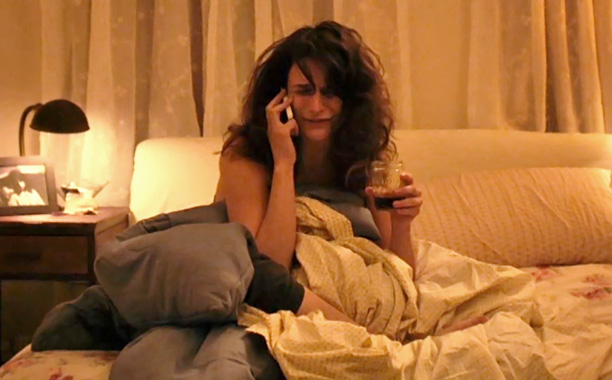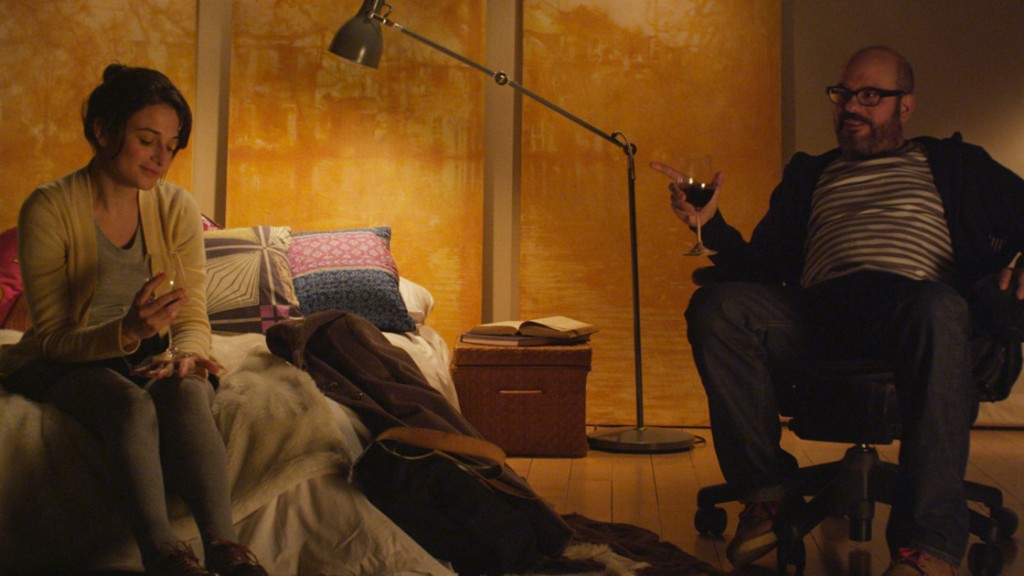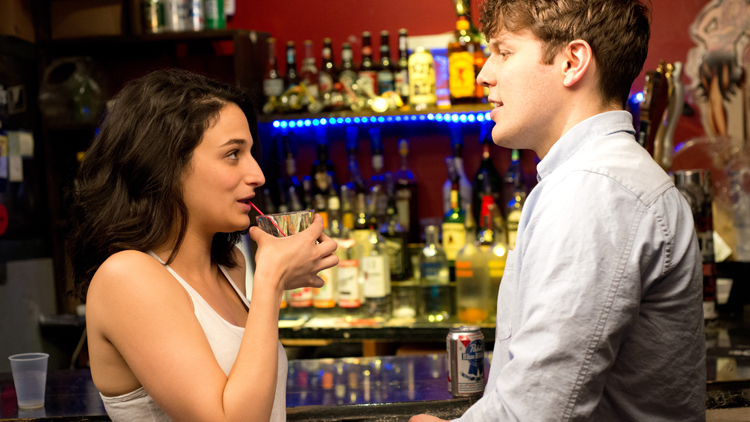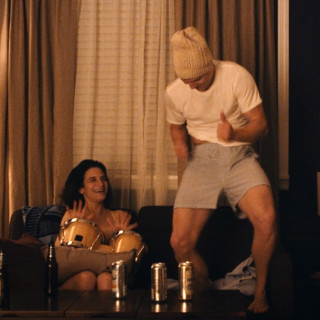Wine signifies wealth on film. The successful boyfriend in the beer-fueled Drinking Buddies packs wine on a picnic hike. Robocop’s cocaine kingpin drinks it at work. In Say Anything, the heroine’s affluent family grills her blue-collar boyfriend while sipping from crystal glasses.
This connotation obscures a fundamental truth about wine: that it is often the cheapest booze available. A bottle of wine costs as little as a few dollars. Yet many film-goers would not recognize whether a bottle was expensive or cheap just from the look of it. Plenty of cheap wines have fancy labels, while prestigious boutique producers use the same eye-catching, colorful designs as mass-produced corporate brands. (Highly branded wines are the easiest to identify. Many people have a basic understanding that ‘Silver Oak’ is expensive, which underlies its popularity despite its poor price value.) If a glass of wine isn’t known to be high class, its assumed to be aspirational of high class. The same could be said of wine drinkers.
A pile of cans’ or ‘a flask’ visually connote cheap drinking more effectively, but their representation becomes inextricably tied with characterizations of desperation, and recklessness. So chalk it up to Obvious Child, whose heroine Donna finds herself knocked up by a relative stranger after losing her job, apartment, and serious boyfriend, to be the movie that documents the reality of the struggling wine consumer.
As a time capsule for the 2010s Brooklyn, Obvious Child captures the sparse apartments, the well-worn bars, and silent taxi rides of an urban twenty-something’s (and thirty something’s) life. It also articulates its character’s drinking behaviors just as accurately. In Obvious Child, wine is only drunk at home, and its always red (the film is set in winter.) A lonesome comedian spills a good deal on his shirt, during a doomed seduction of attempt in his bachelor pad. Donna and her friends drink wine over dinner, haranguing and playfully debating women’s rights.
On the other hand, these characters order call drinks and beer at the bar, (notably hipster-staple Pabst Blue Ribbon and Brooklyn Lager by Brooklyn Brewery.) Donna and her date don’t order wine at the Italian restaurant, where it would be most stock in trade. Which makes perfect sense: ordering a glass out in New York City would start at $7 at the absolute cheapest. Buying the bottle at a store is almost always cheaper. At a bar, the choice is between a good beer and a decent to terrible wine for $2-4 more. At home, the choice is between a six pack of good beer and a decent to terrible wine for $5 less. And if someone is bent on spending that $7, the cocktail will at least be stronger, and wouldn’t make you sleepy.

Unfortunately, its difficult to determine how expensive the wines in Obvious Child are. Only one wine is potentially identifiable. Toward the beginning, Donna leaves a series of drunken voice mails on her ex’s line. She swaggers, jeers, back-pedals, hurls her phone, and brandishes a bottle of red wine. Bottles accumulate on the bedside table and dresser as the night drags on. The low quality of the video before makes it hard to tell, but the cheery yellow label and neck foil are emblazoned with a logo of a black sun. Personalized neck foils are usually only found on highly mass-produced wines, where the extra brand-ability justifies the extra expense. Small production wineries opt for solid color neck foils manufactured for general use. The sun logo suggests a balmy appellation like Spain or Central California, which coincidentally are areas well suited to producing hundreds of thousands of tons of cheap, ripe grapes. The logo is nearly a silhouette of the Mirassou logo, and the yellow foil recalls Cupcake, two grocery story brands. (Except in New York, where wine can only be sold in liquor stores.) In its own way, this label is actually a pinnacle of iconicity—its so iconic, it evokes other generic brands without even being identifiable itself. A couple dozen wine store and website searches through NYC turned up empty. In fact, its possible that the wine is Mirrasou from a previous marketing cycle. Whatever it is, the wine looks polished and is probably priced at a dollar or two cheaper than the brands it rips off. Donna clearly stocked up in advance, which would have been between $6-$8 at a local wine shop. She even drinks it out of a mason jar.
Still, there are times when beer should be drunk in house. Especially when its purchased after midnight, and all that’s open is the deli below the apartment. Or, when its the only thing on hand at a young man’s apartment. Wine may be a cheap drinking option, but Donna’s wine consumption is as gendered as its close pint-of-ice cream correlate. David Cross, dressed in a ridiculous tank top, is feminized for comedic affect, (not unproblematically,) when he drinks wine later in the film. When Donna and her one-night-stand, Max, drunkenly revel through the wee hours of the night, they’re pounding local microbrews, (Brooklyn Lager and Sweet Action from Sixpoint Brewery.) The shining silver cans ornament the blissful scene of the two kids parading and messing around, which unfolds to the Paul Simon song from which the movie takes its name. This is also the moment that immediately precedes their off-screen, unprotected sex. The conflict and title of the movie are linked together in a moment of innocent bacchanalia.
Obvious Child is a comedy, but it also a fairly realistic portrait of a young woman making the decision to have an abortion. No matter where audiences fall politically, both sides would agree that this is a serious situation that preferably would have been avoided. It would be easy for the film to jettison Donna’s life-choices, if only to better illustrate her deepened maturity at the end. The bottle swigging and beer pounding could have been shown as problematic and unstable. Yet the drinking is shown normally, neutrally, with a streak of slapstick. It doesn’t seem to be part of the problem. Similarly, Donna doesn’t seem remorseful about her choices. She doesn’t waver in resolve to get an abortion, or agonize with guilt about it. She grows up a little, notably in her ability to connect with others, but without giving up pieces of herself. Obvious Child fiercely insists on the normalcy of Donna’s decision to have an abortion, and of the decisions that led her there. It doesn’t reject Hollywood’s conflation of cheap-drinking, immaturity, and bad choices, as much as say “Hey, we’re all human here. Let’s be generous.”
This post is part of the series on wine representation in film, called What Were They Drinking?!, co-posted on The Nightly Glass.



